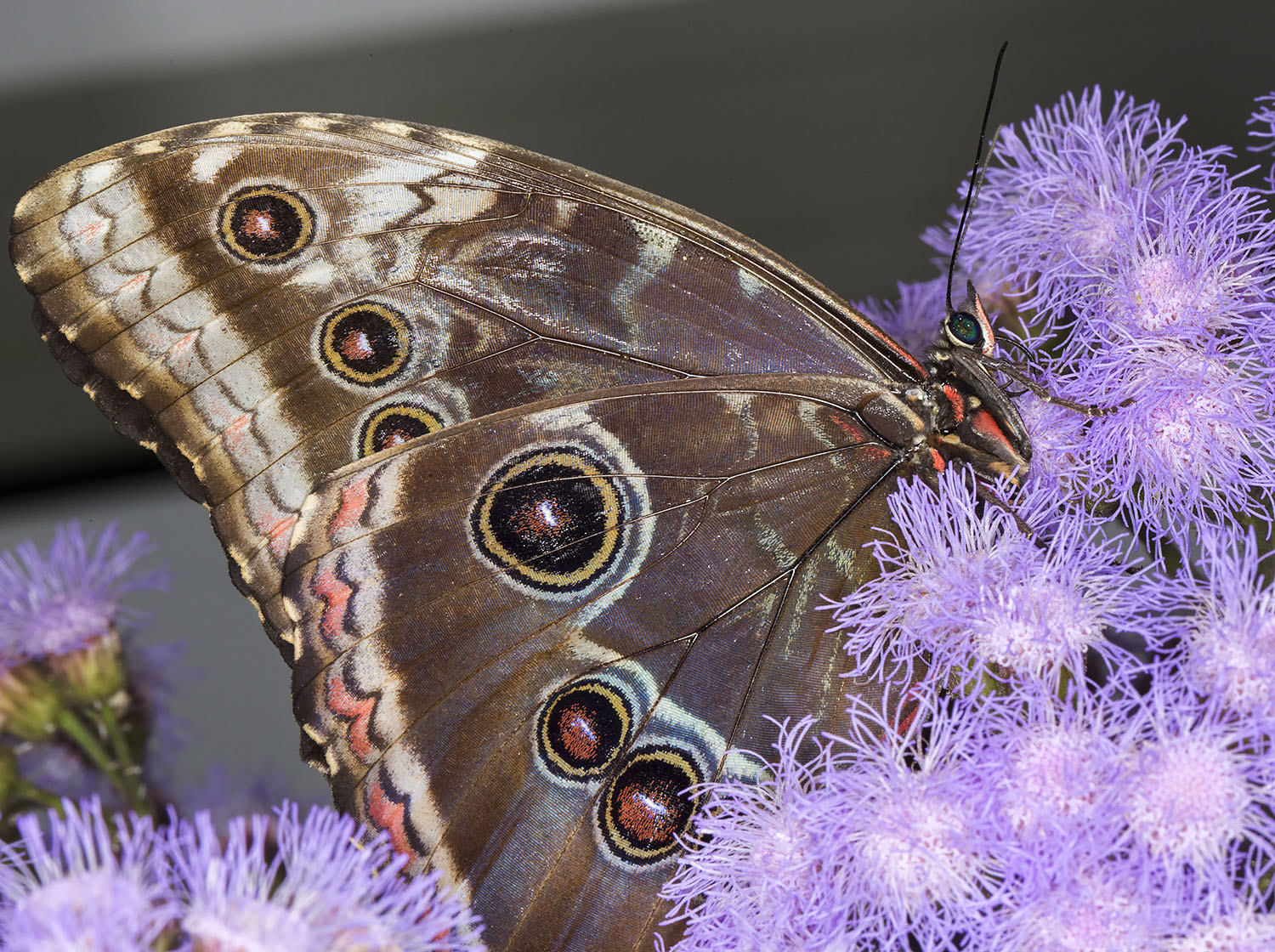 |
| Scarlet Peacock, Anartia amathea. Wisley Gardens, Butterflies in the Glasshouse, 10 February 2015. |
In February, the Royal Horticultural Society releases exotic butterflies into the tropical portion of their large glasshouse at Wisley Gardens. Wisley is a lovely place at any time of year, and the glasshouse in winter is always worth a visit. The RHS take care to have interesting and beautiful plants on display there all the time.
Knowing what would be there this time, I took my big camera (EOS 6D with 100mm macro lens and ring flash). I saw maybe a dozen species of butterflies and ended up with a few nice pics. Other species are released at different times.
I am reasonably sure of the identification of most of these, but less so of the swallowtails, some of which are very variable species.
 |
| Owls and Blue Morphos at a feeding station. Wisley Gardens, Butterflies in the Glasshouse, 10 February 2015. |
Feeding stations were set up with sugar solution and various fruits. These Owls and Blue Morphos had their wings closed; they both looked very different when they were held flat.
 |
| Blue Morpho, Morpho peleides. Wisley Gardens, Butterflies in the Glasshouse, 10 February 2015. |
This is a Blue Morpho, one of those on the right above. Here's a closeup of the same species with closed wings, feeding from one of the flowering plants.
The trouble with the feeding stations, from the photographer's point of view, is that they were too bright and colourful, and the butterflies blended in!
 |
| Great Mormon, Papilio memnon, female. Wisley Gardens, Butterflies in the Glasshouse, 10 February 2015. |
This is one of the variable species, and I think I have the right name. It's also sexually dimorphic, and this would seem to be the male of the same species, if my web searches have revealed the truth to me (be wary of such truths):
 |
| Great Mormon, Papilio memnon, male. Wisley Gardens, Butterflies in the Glasshouse, 10 February 2015. |
At first it looks very different, but it does have the same veins and compartments in its wings. It doesn't have the long tails, but some female forms don't have those either.
I had hoped to show the chrysalides the butterflies emerge from, as they are on display in a side room. But that cabinet is just as humid as the tropical area and has just as much condensation on the inside of the glass.
 |
| The chrysalis cabinet. Wisley Gardens, Butterflies in the Glasshouse, 10 February 2015. |
So there is not much to see! With the naked eye you can move about and see quite a lot, but it can't be shown by a single photograph.


























